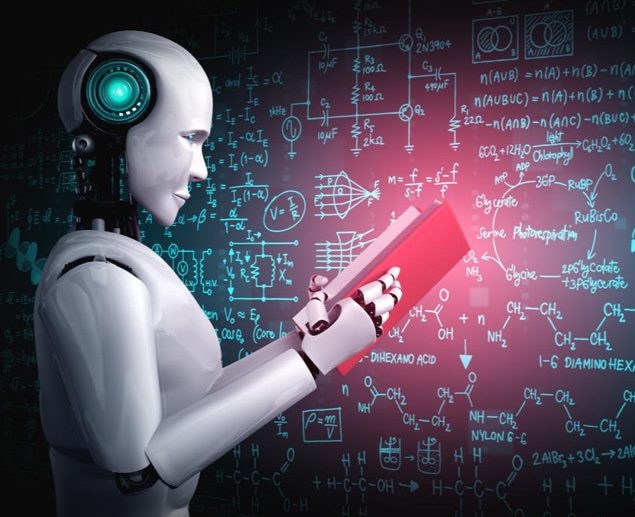
Artificial intelligence (AI) broadly refers to any human-like behavior displayed by a machine or system. In AI’s most basic form, computers are programmed to “mimic” human behavior using extensive data from past examples of similar behavior. This can range from recognizing differences between a cat and a bird to performing complex activities in a manufacturing facility.
Learn more about Artificial Intelligence
Whether you are talking about deep learning, strategic thinking, or another species of AI, the foundation of its use is in situations that require lightning-fast responses. With AI, machines can work efficiently and analyze vast amounts of data in the blink of an eye, solving problems through supervised, unsupervised, or reinforced learning.
Early days of AI
While its early forms enabled computers to play games like checkers against humans, AI is now part of our daily lives. We have AI solutions for quality control, video analytics, speech-to-text (natural language processing), and autonomous driving, as well as solutions in healthcare, manufacturing financial services, and entertainment.
Powerful tool for businesses and organizations
Artificial intelligence can be a very powerful tool for both large corporations generating significant data and small organizations that need to process their calls with customers more effectively. AI can streamline business processes, complete tasks faster, eliminate human error, and much more.
AI at the edge
N Information Technologies Pvt Ltd is pioneering a new frontier of AI by harnessing data and gaining insights at the edge. We empower success with real-time analytical AI for automation, prediction, and control to help you realize the value of your data faster and leverage limitless opportunity for innovation, growth, and success.
A brief history of artificial intelligence
Before 1949, computers could execute commands, but they could not remember what they did as they were not able to store these commands. In 1950, Alan Turing discussed how to build intelligent machines and test this intelligence in his paper “Computing Machinery and Intelligence.” Five years later, the first AI program was presented at the Dartmouth Summer Research Project on Artificial Intelligence (DSPRAI). This event catalyzed AI research for the next few decades.
Computers became faster, cheaper, and more accessible between 1957 and 1974. Machine learning algorithms improved and, in 1970, one of the hosts of DSPRAI told Life Magazine that there would be a machine with the general intelligence of an average human being in three to eight years. Despite their success, computers’ inability to efficiently store or quickly process information created obstacles in the pursuit of artificial intelligence for the next ten years.
AI was revived in the 1980’s with the expansion of the algorithmic toolkit and more dedicated funds. John Hopefield and David Rumelhart introduced “deep learning” techniques that allowed computers to learn through experience. Edward Feigenbaum introduced “expert systems” that mimicked human decision-making. Despite a lack of government funding and public hype, AI thrived and many landmark goals were achieved in the next two decades. In 1997, reigning chess World Champion and Grandmaster Gary Kasparov was defeated by IBM’s Deep Blue, a chess-playing computer program. The same year, speech recognition software developed by Dragon Systems was implemented on Windows. Cynthia Breazeal also developed Kismet, a robot who could recognize and display emotions.
Types of artificial intelligence
Artificial intelligence is classified into two main categories: AI that’s based on functionality and AI that’s based on capabilities.
Based on Functionality
Reactive Machine – This AI has no memory power and does not have the ability to learn from past actions. IBM’s Deep Blue is in this category.
Limited Theory – With the addition of memory, this AI uses past information to make better decisions. Common applications like GPS location apps fall into this category.
Theory of Mind – This AI is still being developed, with the goal of its having a very deep understanding of human minds.
Self-Aware AI – This AI, which could understand and evoke human emotions as well as have its own, is still only hypothetical.
Based on Capabilities
Artificial Narrow Intelligence (ANI) – A system that performs narrowly defined programmed tasks. This AI has a combination of reactive and limited memory. Most of today’s AI applications are in this category.
Artificial General Intelligence (AGI) – This AI is capable of training, learning, understanding, and performing like a human.
Artificial Super Intelligence (ASI) – This AI performs tasks better than humans due to its superior data processing, memory, and decision-making abilities. No real-world examples exist today.
Machine Learning
A computer “learns” when its software is able to successfully predict and react to unfolding scenarios based on previous outcomes. Machine learning refers to the process by which computers develop pattern recognition, or the ability to continuously learn from and make predictions based on data, and can make adjustments without being specifically programmed to do so. A form of artificial intelligence, machine learning effectively automates the process of analytical model-building and allows machines to adapt to new scenarios independently.
The four steps for building a machine learning model are:
1. Select and prepare a training data set necessary to solving the problem. This data can be labeled or unlabeled.
2. Choose an algorithm to run on the training data.
3. Train the algorithm to create the model.
4. Use and improve the model.
Deep Learning
Deep learning is a subset of machine learning that has demonstrated significantly superior performance to some traditional machine learning approaches. Deep learning utilizes a combination of multi-layer artificial neural networks and data- and compute-intensive training, inspired by our latest understanding of human brain behavior. This approach has become so effective it’s even begun to surpass human abilities in many areas, such as image and speech recognition and natural language processing.
Deep learning models process large amounts of data and are typically unsupervised or semi-supervised.
Turning data into efficiency and competitive edge with modern AI applications
After centuries of theorizing, decades of research, and years of advertising, artificial intelligence has finally begun to make inroads into the enterprise, where it’s set to become a pervasive feature. In a recent industry survey, 50% of respondents said they have deployed an AI initiative, have one in a proof-of-concept stage, or plan to within the next year.
Why the pace of enterprise AI is quickening
Recent advances in algorithms, the proliferation of digital data sets, and improvements in computing—including increases in processing power and decreases in price—have come together to initiate a new breed of AI technology that is enterprise-ready. Nearly all organizations have an ever-growing mountain of data assets, and AI provides the means to analyze this resource at scale.
AI is also set to become an enterprise staple as a cornerstone in the digital transformation process. AI is an omni-use technology that can optimize efficiency and insight in almost any business process—from customer service operations and physical and cybersecurity systems to R&D functions and business analytics processes.
Modern applications for AI
AI has the unique ability to extract meaning from data when you can define what the answer looks like but not how to get there. AI can amplify human capabilities and turn exponentially growing data into insight, action, and value.
Today, AI is used in a variety of applications across industries, including healthcare, manufacturing, and government. Here are a few specific use cases:
Prescriptive maintenance and quality control improves production, manufacturing, and retail through an open framework for IT/ OT. Integrated solutions prescribe best maintenance decisions, automate actions, and enhance quality control processes by implementing enterprise AI-based computer vision techniques.
Speech and language processing transforms unstructured audio data into insight and intelligence. It automates the understanding of spoken and written language with machines using natural language processing, speech-to-text analytics, biometric search, or live call monitoring.
Video analytics and surveillance automatically analyzes video to detect events, uncover identity, environment, and people, and obtain operational insights. It uses edge-to-core video analytics systems for a wide variety of workload and operating conditions.
Highly autonomous driving is built on a scale-out data ingestion platform to enable developers to build the optimum highly-autonomous driving solution tuned for open source services, machine learning, and deep learning neural networks.
